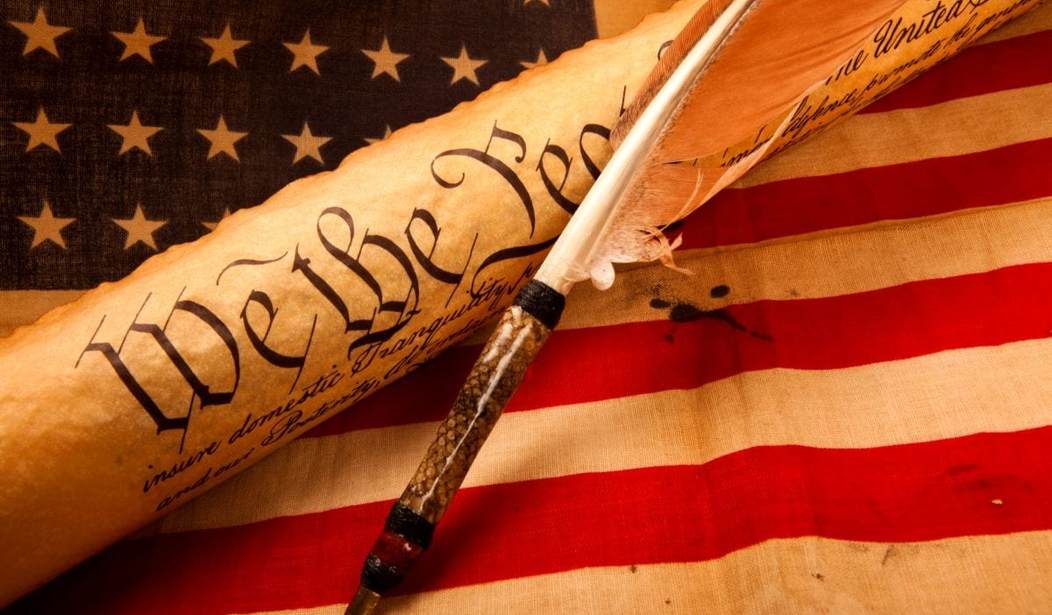Another parchment manuscript of America’s Declaration of Independence was found in England, two Harvard researchers announced. The only other manuscript copy of the Declaration is kept at the National Archives in Washington.
The newly discovered document was dated to the 1780s. It was found in the town of Chichester and is believed to have originally belonged to the Duke of Richmond — one of the few Englishmen who supported the American rebellion.
The parchment was likely made in New York or Philadelphia. The researchers are still trying to determine the person who wrote the document and who paid for the foundational document of the United States to be copied.
The signatories on the Sussex version of the document are not broken down by state, something that distinguished it from the Declaration in the National Archives, the researchers said.
In an academic paper, the researchers say the document probably was commissioned by James Wilson of Pennsylvania, who later helped draft the Constitution and was among the original justices appointed to the Supreme Court.
“The team hypothesizes that this detail supported efforts, made by Wilson and his allies during the Constitutional Convention and ratification process, to argue that the authority of the Declaration rested on a unitary national people, and not on a federation of states,’’ the researchers wrote in the statement.
The team, working with British officials, is working to carefully test the document in a way that will not damage the parchment.
According to the National Archives, the Massachusetts Historical Commission holds one of 26 copies of the Declaration of Independence prepared by John Dunlap, the printer for the Congressional Congress, after its signing on July 4, 1776.
What a marvelous find. But before we break out the champagne and raise a toast, let’s make sure it’s genuine. Carbon dating is out of the question because they would have to destroy a small part of the document in order to get an accurate reading. But there are other scientific means of establishing an accurate dating of the document, no doubt underway already.
But imagine working in that tiny records office in southern England and being completely unaware of the incredible historical document just a few feet away.
James Wilson was one of the more interesting characters of our founding. One of the youngest and most accomplished members of the Continental Congress, Wilson was one of the strongest supporters of independence in the colonies. He was outshone in Philadelphia by two of his fellow Pennsylvanian congressmen, Benjamin Franklin and John Dickinson, but later made his mark as one of the drafters of the Constitution and as an original Supreme Court justice.
ABC News reports that the document has been named “The Sussex Declaration” and that the researchers are still trying to track down its provenance:
The Sussex Declaration is an American-made copy believed to have been created in the mid-1780’s for James Wilson, a delegate to the Constitutional Convention who the researchers believe may have been trying to use the document to influence debate around the convention on behalf of the federal Constitution.
Sneff, the Research Manager for the project, discovered the document nearly two years ago in an online archive catalog and reached out to the office holding it. After seeing an image of the document and having a conversation with the conservator, she told ABC “we knew it was unlike any copy we’d seen before.”
The Sussex Declaration is similar to the Declaration in Washington, though because it is less worn, you can read every single word compared to the faded version sitting in the Archives. There’s one really significant difference between the two copies: The signed names at the bottom of the Sussex are scrambled so that they are not listed by state.
“The list of names was intentionally scrambled, we believe, to drive home the point that the signers of the Declaration of Independence signed as individuals, as a community,” rather than as a grouping of states, Sneff said.
At the time this document was likely created, American leaders were in a heated debate about what the new U.S. government would look like. Proponents of a constitution that would create a strong national, federal government began to grow in strength.
The research team believes the Sussex copy may have supported Wilson’s argument “that the authority of the Declaration rested on a unitary national people, and not on a federation of states,” according to a Harvard statement about the project.
Whatever the reason for its creation, it is a priceless piece of Americana.









Join the conversation as a VIP Member